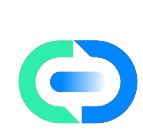What Is an AI Cold Calling Bot?
An AI cold calling bot is a cutting-edge technology that makes automated outbound calls to potential customers. Unlike traditional cold calling methods, these bots use artificial intelligence to have natural-sounding conversations.
They can understand responses, answer questions, and even adapt their pitch based on the prospect’s reactions.
Think of it as having a tireless sales representative that works 24/7 without getting discouraged by rejection or needing coffee breaks!
The technology behind these AI voice agents has improved dramatically in recent years, making them nearly indistinguishable from human callers in many cases.
Why Your Business Needs an AI Cold Caller
Cold calling remains one of the most effective ways to reach new customers, but it’s time-consuming and often demoralizing for human sales teams. An AI cold calling agent changes the game completely.
Your business can benefit from:
- Consistent performance without burnout
- Ability to make hundreds of calls simultaneously
- Perfect script adherence every time
- Detailed analytics on every conversation
I’ve seen businesses increase their contact rates by 300% after implementing AI cold calling bots. The return on investment can be remarkable when you consider the reduced labor costs and increased sales opportunities.
For small businesses especially, this technology levels the playing field against larger competitors with bigger sales teams. Learn more about starting an AI calling business if you’re interested in this opportunity.
Setting Up Your First AI Cold Calling Campaign
Getting started with an AI cold calling bot is simpler than you might think. First, you’ll need to choose a platform like Callin.io that specializes in AI voice technology.
The setup process typically involves these steps:
- Create your account and select a plan
- Upload your contact list
- Design your conversation flow
- Record or select your AI voice
- Test your bot with sample calls
- Launch your campaign
The key to success is starting small. Begin with a targeted list of 50-100 prospects before scaling up. This allows you to refine your approach and fix any issues before going all-in.
I recommend integrating your AI cold calling software with your existing CRM system to keep all customer data in one place.
Crafting the Perfect Cold Call Script
Your AI bot is only as good as the script it follows. The best scripts are conversational, value-focused, and include decision trees for handling different responses.
When writing your script, remember to:
- Keep introductions brief and clear
- Focus on benefits, not features
- Include questions to engage the prospect
- Prepare responses for common objections
- End with a clear call to action
Here’s a simple template to start with:
"Hi [Name], this is [Bot Name] from [Company]. We help [target audience] achieve [specific benefit]. Many businesses like yours have been struggling with [common pain point]. Does that resonate with your experience?"
I’ve found that scripts that acknowledge objections upfront tend to perform better than those that try to push past them. Check out AI sales pitch generator tools to help craft effective scripts.
Training Your AI Bot for Natural Conversations
Modern AI voice conversation technology requires proper training to sound natural. Most platforms use a combination of pre-training and your custom inputs.
To make your bot sound more human:
Include conversational phrases and transitions
Add pause points where appropriate
Program different tones for different situations
Train responses to common objections
One technique I’ve found effective is recording actual successful sales calls and using those conversational patterns as a model for your AI bot.
The goal isn’t to trick people into thinking they’re talking to a human but to make the conversation flow naturally enough that the prospect remains engaged with your message.
For more advanced implementation, consider working with prompt engineering for AI callers to optimize your bot’s responses.
Understanding Legal Compliance for AI Calling
Before launching your AI outbound calls, you must understand the legal framework governing automated calling. Different countries and regions have specific regulations.
In the United States, you need to comply with:
- The Telephone Consumer Protection Act (TCPA)
- Do Not Call Registry restrictions
- State-specific telemarketing laws
Most regulations require that your AI bot:
- Identify itself as an automated system
- Clearly state the company it represents
- Provide an option to opt-out of future calls
- Respect calling hours (typically 8am-9pm local time)
I strongly recommend consulting with a legal expert familiar with telemarketing regulations in your target markets. The fines for violations can be substantial and could seriously impact your business.
For international calls, research location-specific regulations like AI cold calls Australia or AI cold caller Deutsche guidelines.
Measuring Success: Key Metrics to Track
To optimize your AI cold calling campaigns, you need to track the right metrics. The data your bot generates is one of its biggest advantages over human callers.
Focus on these key performance indicators:
- Contact rate: Percentage of calls answered
- Conversation duration: Longer is usually better
- Positive response rate: Prospects showing interest
- Conversion rate: Calls that result in your desired outcome
- Cost per acquisition: Total campaign cost divided by conversions
I recommend reviewing these metrics weekly at first, then monthly once your campaign stabilizes. Look for patterns in successful calls to refine your approach.
Most AI call center platforms provide detailed analytics dashboards that make tracking these metrics straightforward. Use this data to continuously improve your campaign performance.
Integrating Your AI Caller with CRM Systems
For maximum efficiency, integrate your AI cold calling bot with your customer relationship management (CRM) system. This creates a seamless workflow for your sales team.
When properly integrated, your system can:
- Automatically update contact records after calls
- Schedule follow-ups for interested prospects
- Trigger email sequences based on call outcomes
- Assign qualified leads to human sales representatives
- Track the customer journey from first call to close
Popular integrations include Salesforce, HubSpot, and Zoho CRM. Many conversational AI platforms offer pre-built connectors for these systems.
I’ve seen sales teams double their productivity by implementing these integrations, as they eliminate manual data entry and ensure no leads fall through the cracks.
Overcoming Common AI Cold Calling Challenges
Even the best AI cold calling systems face challenges. Being prepared for these issues will help you navigate them successfully.
Common challenges include:
- Call connectivity issues
- Voice clarity problems
- Understanding strong accents
- Handling unexpected responses
- Negative reactions to AI callers
To overcome these challenges:
- Use high-quality phone lines or VoIP services
- Test your AI voice across different devices
- Program multiple response options for common scenarios
- Have a fallback plan for complex conversations
- Be transparent about using AI technology
Remember that technology is constantly improving. What might be a limitation today could be resolved in the next software update. Stay current with the latest conversational AI trends to keep your system optimized.
Scaling Your AI Cold Calling Operations
Once you’ve proven the concept with a successful small-scale campaign, it’s time to think about scaling up. This requires careful planning to maintain quality as you increase volume.
Steps for scaling effectively:
- Segment your contact lists for targeted messaging
- Create specialized scripts for different market segments
- Add more phone lines to handle increased volume
- Implement A/B testing to optimize performance
- Consider time zone differences for international campaigns
When scaling, I recommend increasing your call volume by 25-50% at a time, then allowing a week to analyze results before expanding further.
For larger operations, consider exploring AI call center companies that can handle massive volumes of outbound calls while maintaining quality.
White Labeling Options for Agencies and Resellers
If you’re an agency or reseller looking to offer AI cold calling as a service, white labeling is a compelling option. This allows you to brand the technology as your own solution.
When evaluating white label AI calling platforms, look for:
- Customizable branding options
- Flexible pricing structures
- Robust reporting capabilities
- Multi-client management features
- Technical support for your customers
Popular white label options include Synthflow AI whitelabel, Air AI whitelabel, and Vapi AI whitelabel.
I’ve helped several marketing agencies add AI calling to their service offerings, resulting in significant new revenue streams with relatively low overhead costs.
AI Cold Calling vs. Human Sales Teams
The question isn’t whether to replace your human sales team entirely, but how to find the right balance between AI and human touchpoints.
AI cold callers excel at:
- Initial outreach and screening
- Consistent performance at scale
- Working around the clock
- Gathering basic information
- Following up on leads
Human sales representatives are better at:
- Complex negotiations
- Building genuine relationships
- Handling unusual situations
- Emotional intelligence
- Closing high-value deals
The most successful approach I’ve seen is using AI sales representatives for initial outreach and qualification, then transitioning promising leads to human sales professionals for relationship-building and closing.
This hybrid approach can dramatically increase your team’s efficiency while maintaining the human connection that’s often necessary to close deals.
Cost Analysis: ROI of AI Cold Calling
Understanding the financial implications of implementing an AI cold calling system is crucial for business planning.
Typical costs include:
- Monthly subscription to an AI calling platform
- Phone line expenses (often billed per minute)
- Setup and integration fees
- Script development and optimization
- Ongoing management and adjustments
These costs should be weighed against:
- Reduced labor expenses
- Increased contact capacity
- Higher conversion rates
- Improved data collection
- Time savings for your team
In my experience, most businesses see positive ROI within 3-6 months of implementing AI cold calling. The exact timeline depends on your industry, average deal size, and existing sales processes.
For a deeper dive into financial considerations, check out factors to consider while pricing conversational AI.
Industry-Specific AI Cold Calling Strategies
Different industries require tailored approaches to AI cold calling. What works for real estate might not work for financial services.
Real Estate:
- Focus on new listings and property features
- Offer virtual tours and information packages
- Qualify buyers based on budget and requirements
Financial Services:
- Emphasize security and compliance
- Offer educational resources about financial products
- Pre-qualify prospects based on specific criteria
Healthcare:
- Maintain strict HIPAA compliance
- Schedule appointments and follow-ups
- Provide information about services and insurance
Each industry has its own regulations, customer expectations, and sales cycles. Specialized solutions like conversational AI for healthcare or conversational AI for real estate are designed with these unique needs in mind.
I recommend researching industry-specific case studies before implementing your own solution.
Take Your Sales to the Next Level with AI Cold Calling
AI cold calling technology has transformed from a futuristic concept to a practical, accessible tool for businesses of all sizes. The ability to scale your outreach efforts while maintaining quality conversations gives you a significant competitive advantage.
Whether you’re looking to supplement your existing sales team or completely revolutionize your approach to prospecting, AI cold calling bots offer an efficient, cost-effective solution.
If you’re ready to experience the benefits of this technology firsthand, I recommend starting with a pilot program focused on a specific segment of your market. The results will likely speak for themselves.
If you want to manage your business communications simply and effectively, I suggest exploring Callin.io. This platform allows you to implement AI-powered phone agents that handle incoming and outgoing calls autonomously. With the innovative AI phone agent, you can automate appointments, answer frequently asked questions, and even close sales while interacting naturally with customers.
The free account on Callin.io offers an intuitive interface to configure your AI agent, with included test calls and access to the task dashboard to monitor interactions. For those wanting advanced features like Google Calendar integrations and built-in CRM, you can subscribe to one of the monthly plans starting at 30USD. Discover more at Callin.io.

Helping businesses grow faster with AI. 🚀 At Callin.io, we make it easy for companies close more deals, engage customers more effectively, and scale their growth with smart AI voice assistants. Ready to transform your business with AI? 📅 Let’s talk!
Vincenzo Piccolo
Chief Executive Officer and Co Founder


